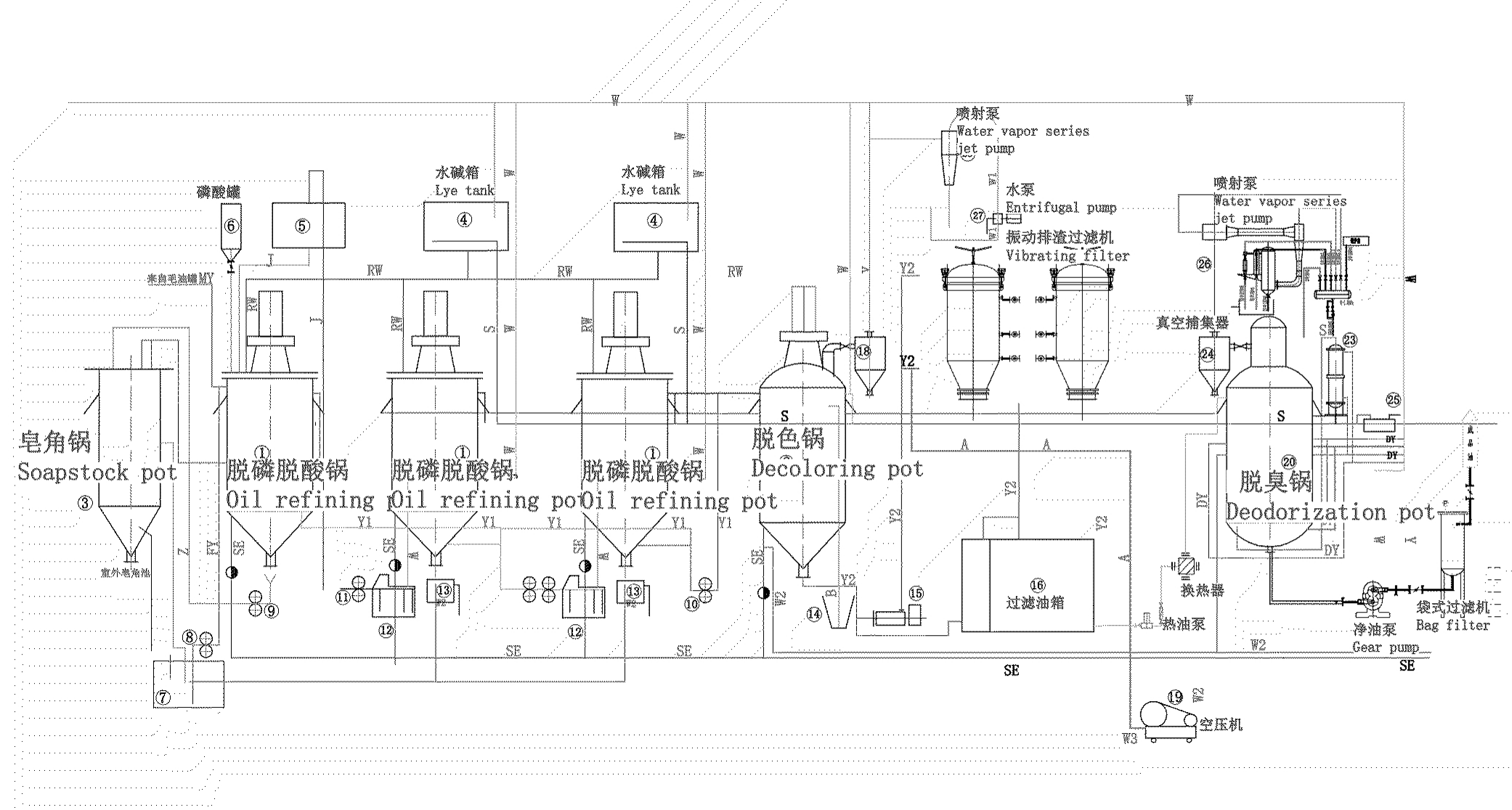 The role of soybean oil refining equipment
The role of soybean oil refining equipment
The other ingredients in oils except triglycerides are called impurities.
The role of oil refining equipment is to remove impurities in the edible oil, maintain the biological properties of the oil, and retain or extract useful substances. In fact, the refining equipment does not remove all impurities, but selectively removes impurities.
According to the composition and properties of impurities in crude oil, it can be divided into three categories:
(1) Insoluble solid impurities, such as silt, cake powder, fiber, clay, catalyst, etc.
(2) Peptizing impurities, such as free fatty acids, sterols, vitamin E, pigments, vitamins, gossypol, etc.
(3) Volatile impurities, such as moisture, alcohols, hydrocarbon solvents, smelly substances, etc.
Most impurities are detrimental to the quality and storage safety of oils and fats. For example, moisture not only affects the transparency of oils but also promotes the hydrolysis and rancidity of oils; free fatty acids affect the flavor and promote deterioration; phospholipids can make oils turbid and produce black precipitates when heated. Foaming, bitterness, etc.; various pigments directly affect the color of the oil, and also promote the rancidity of the oil; the existence of colloids, sulfur and phosphorus compounds, soap feet, and heavy metal salts makes it difficult for subsequent processes such as steam stripping to deacidify.
 The main process of oil refining equipment
The main process of oil refining equipment
(1) Degumming: removing phospholipids, mucus, resins, proteins, sugars, trace metals, etc. in the crude oil, generally using hydration and acid refining methods.
(2) Deacidification: Use food grade lye neutralization method to remove free fatty acids, acid pigments, sulfides, insoluble impurities and trace metals in the oil.
(3) Washing with water: washing away soap feet and water-soluble impurities remaining in the oil in the deacidification process.
(4) Dehydration: Use heating and vacuum drying methods to remove the water in the refined oil.
(5) Decolorization: Use adsorbents such as clay, aluminum silicate, and activated carbon to remove various pigments, colloids, oxides, etc. in the oil.
(6) Deodorization: The principle of vacuum stripping is used to remove low-molecular odorous substances, free fatty acids, monoglycerides, glycolipids, sulfides, and thermal decomposition products of pigments in the oil.
(7) Dewaxing or degreasing: mainly use freezing, crystallization or winterization crystallization, and fractionation to remove wax or solid fat in the oil.
Copyright © Henan Zhongxing Grain And Oil Machinery Co.,Ltd. All Rights Reserved. Powered by MetInfo